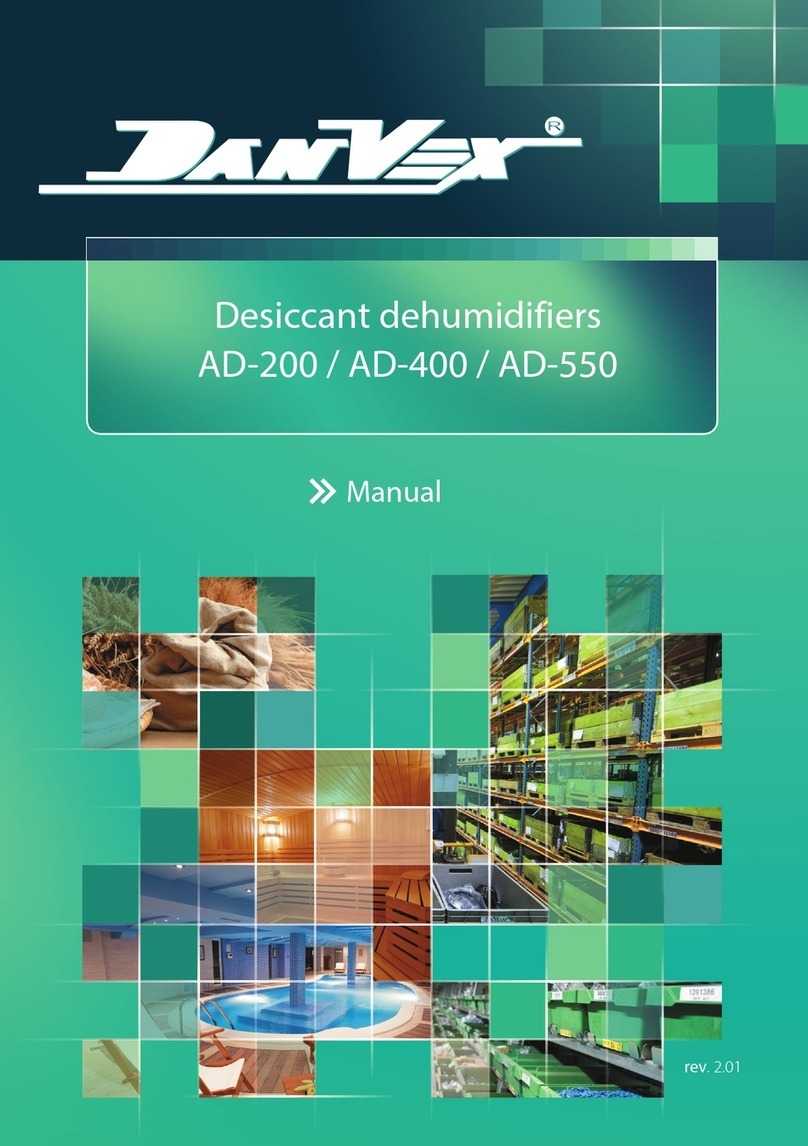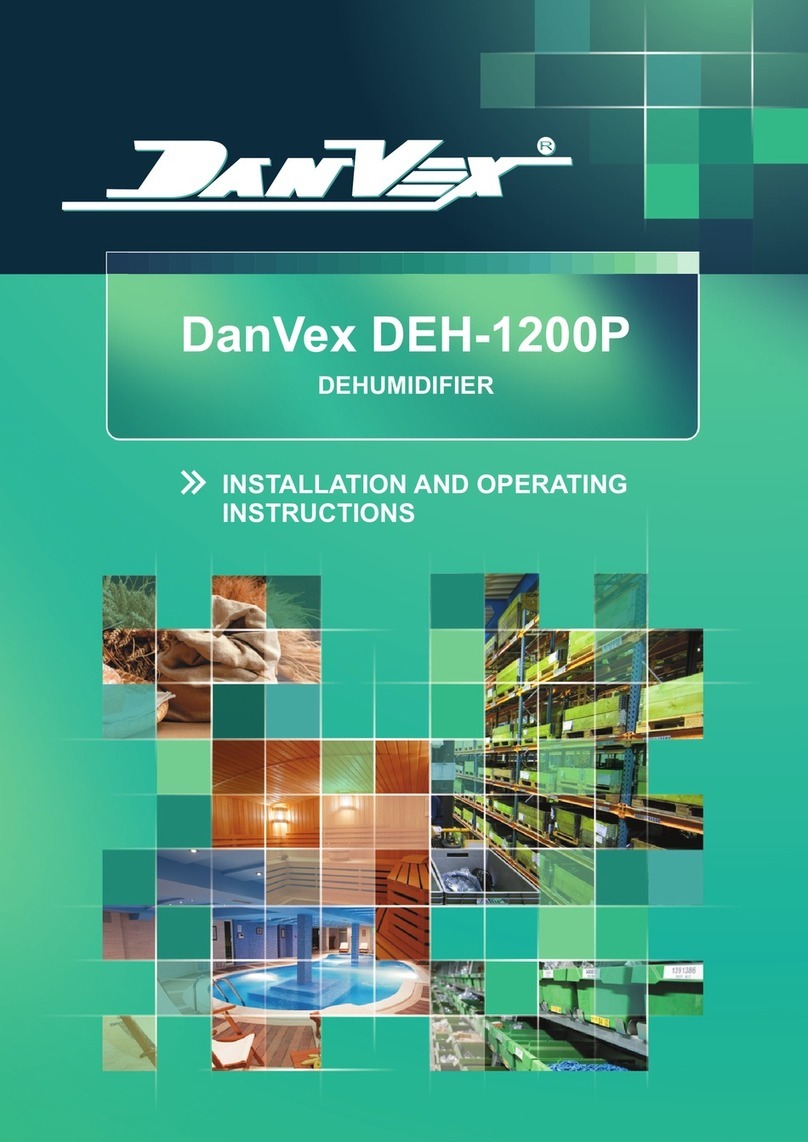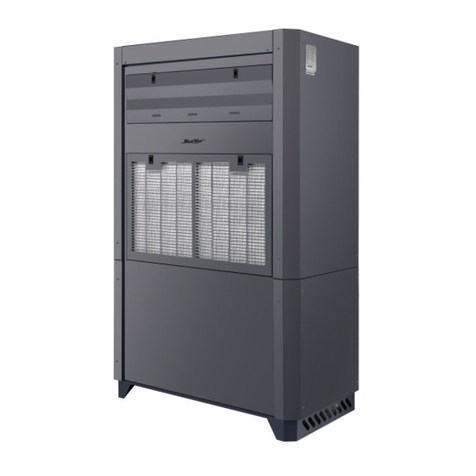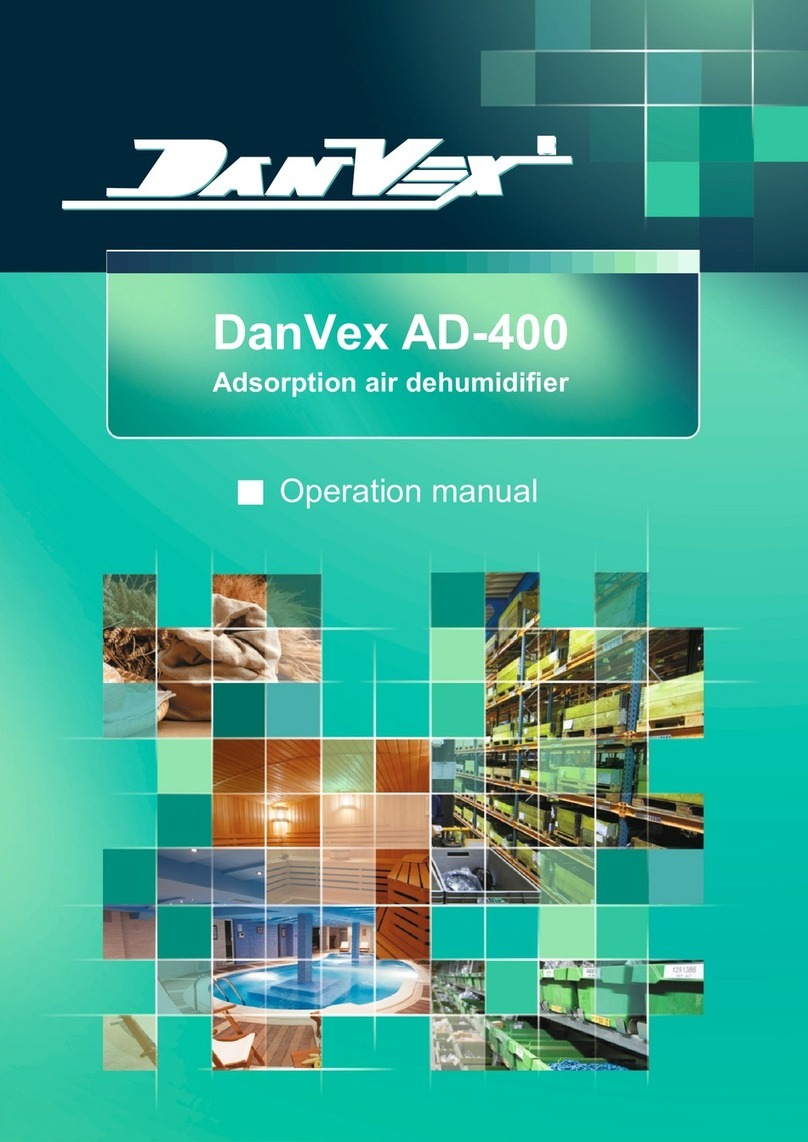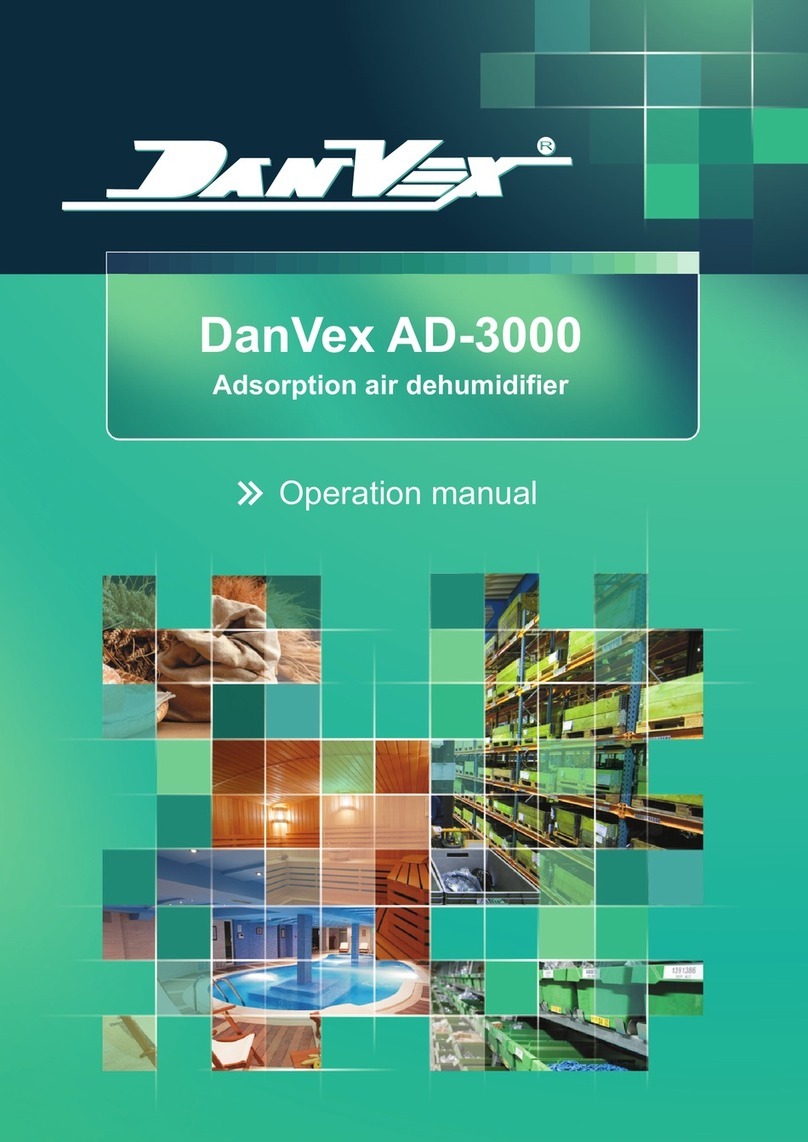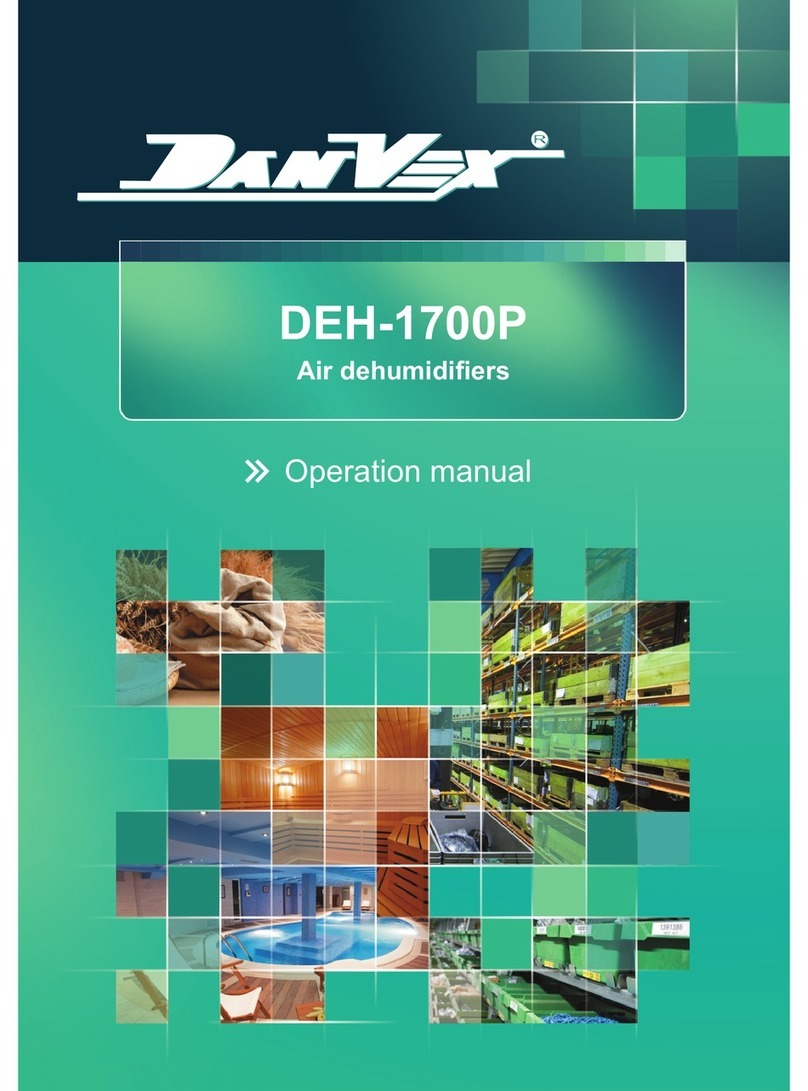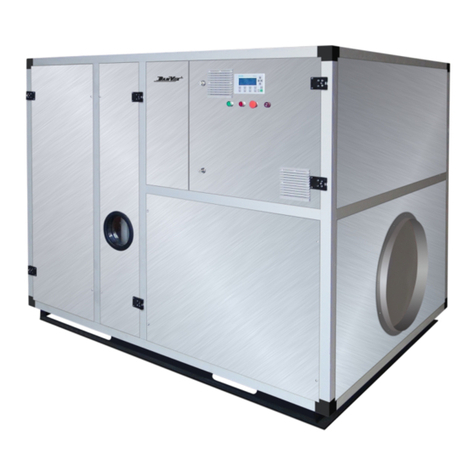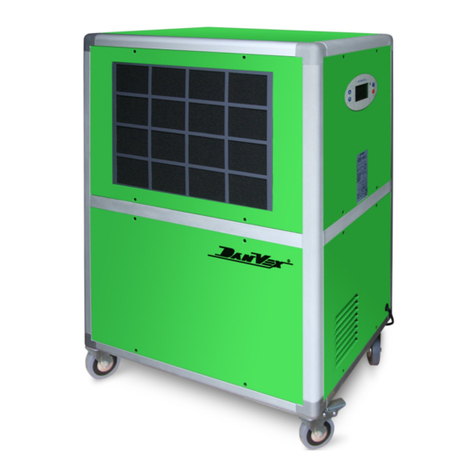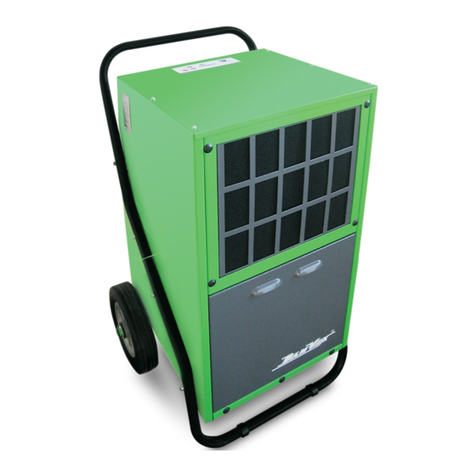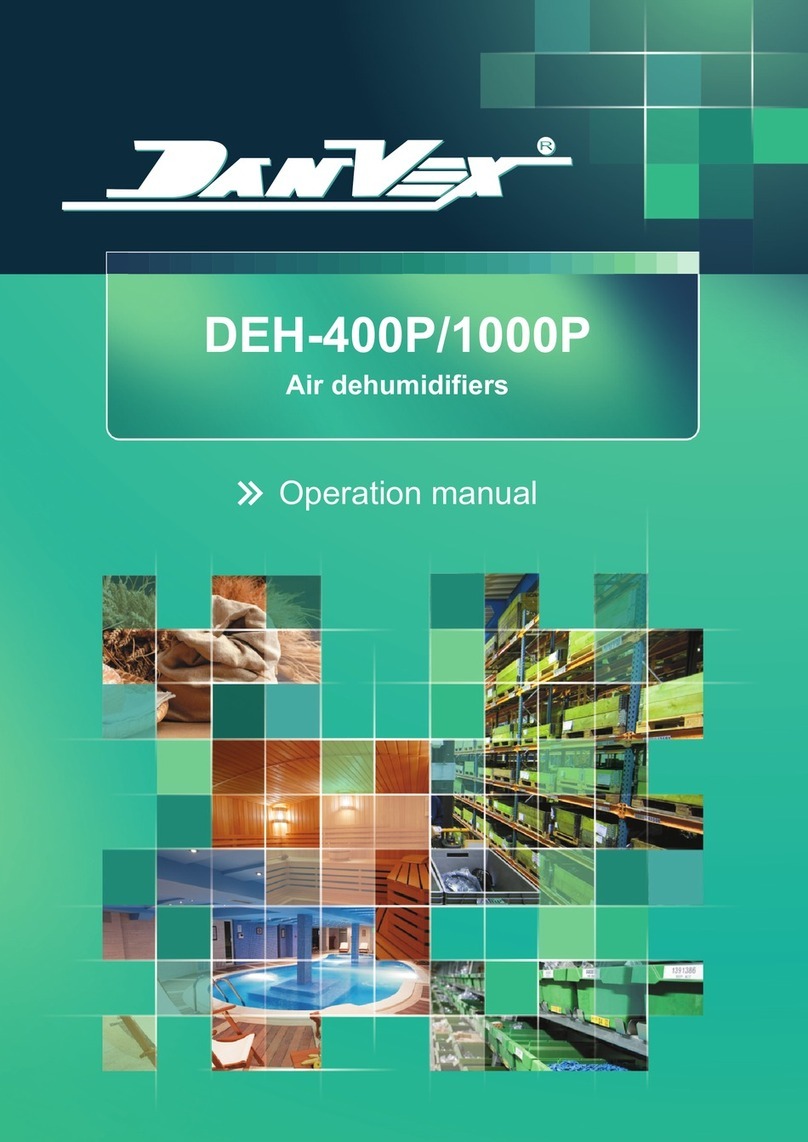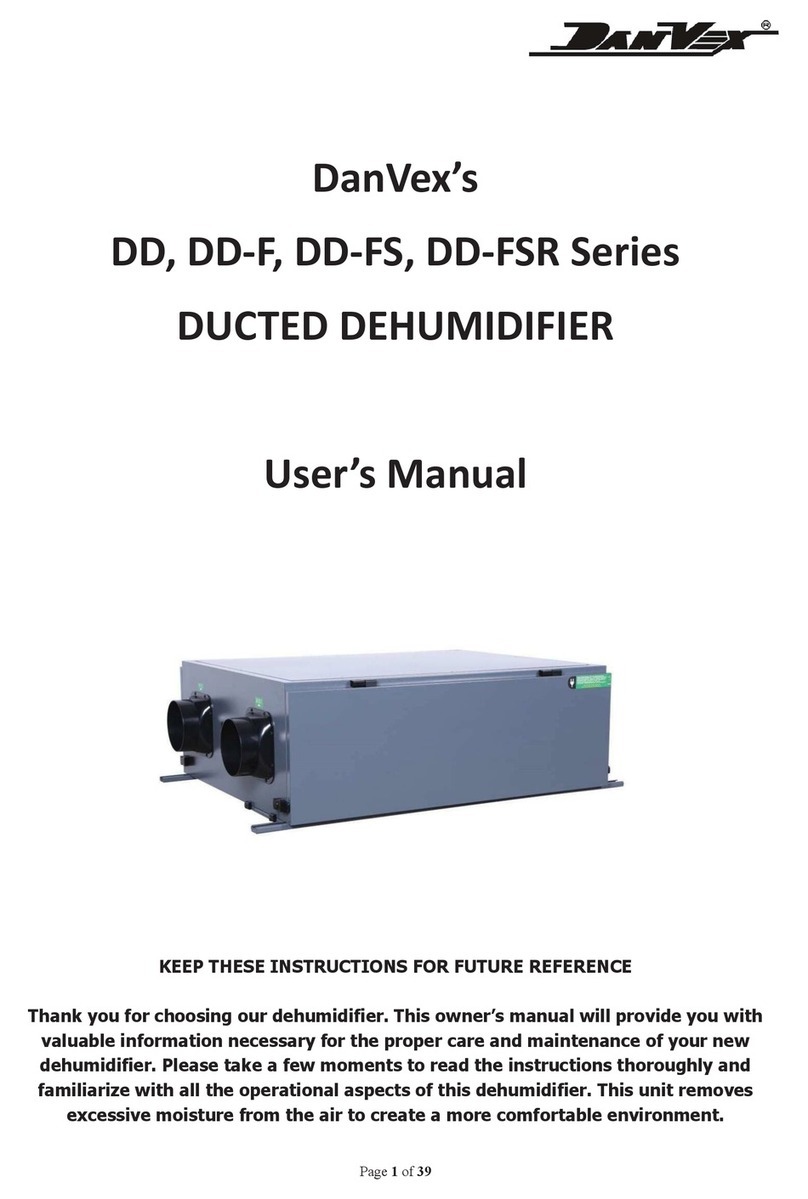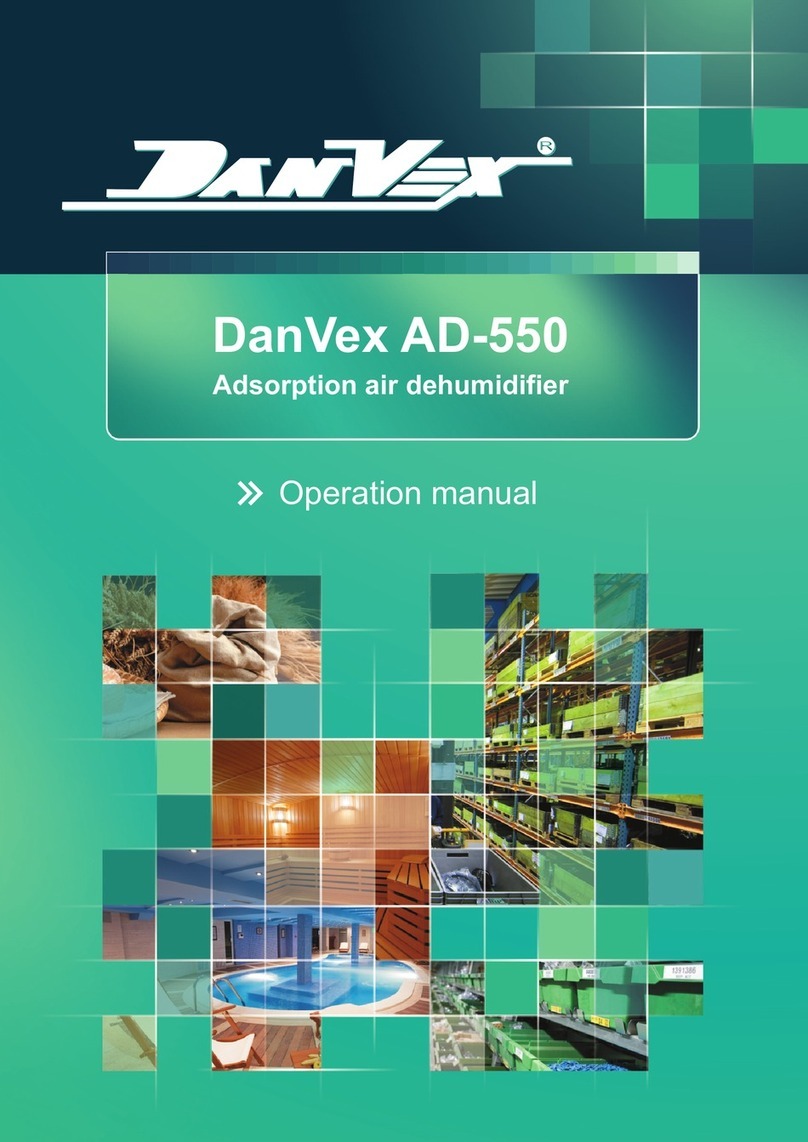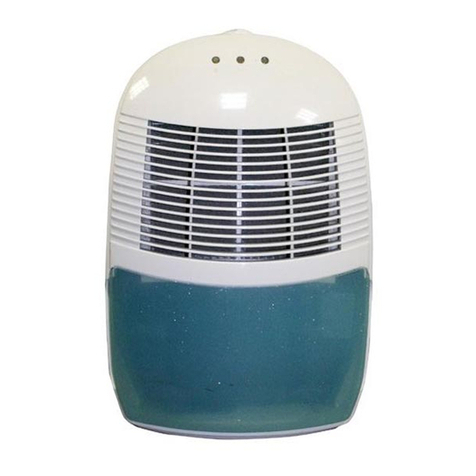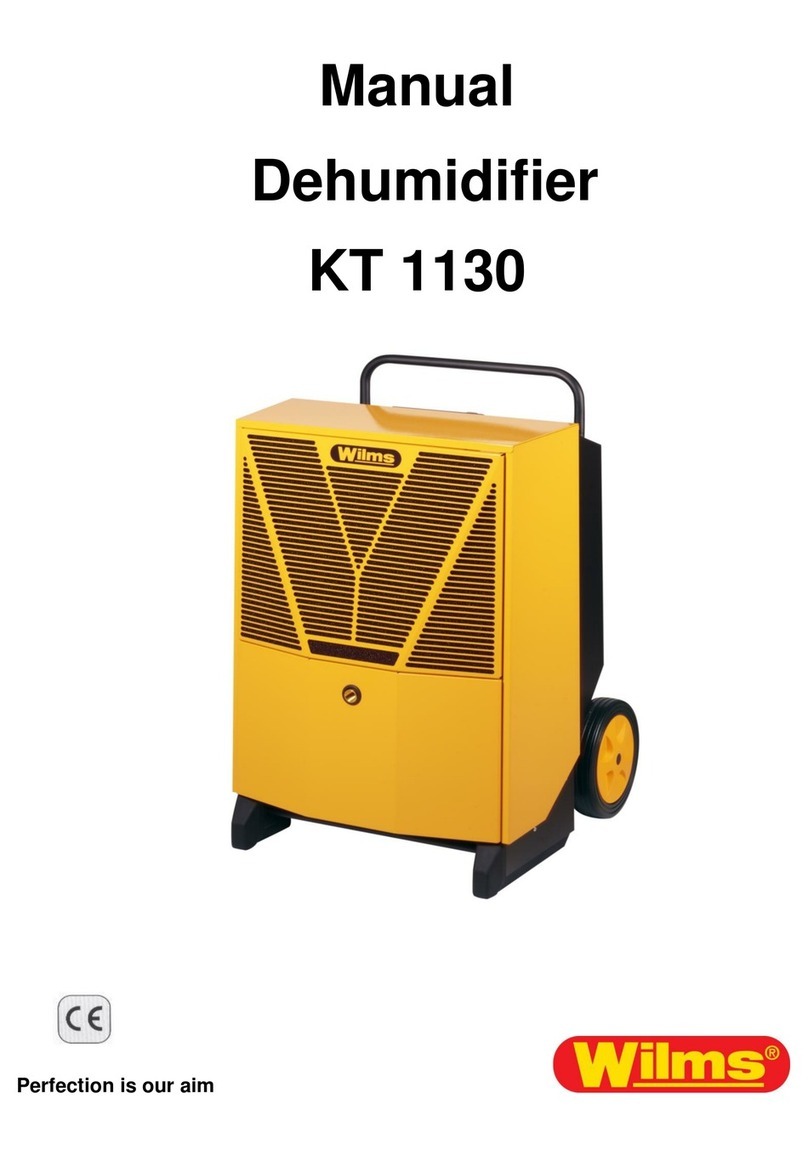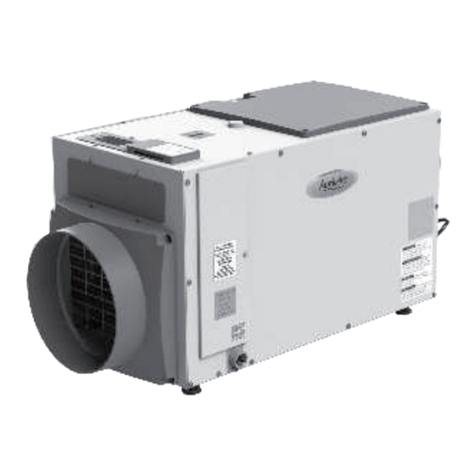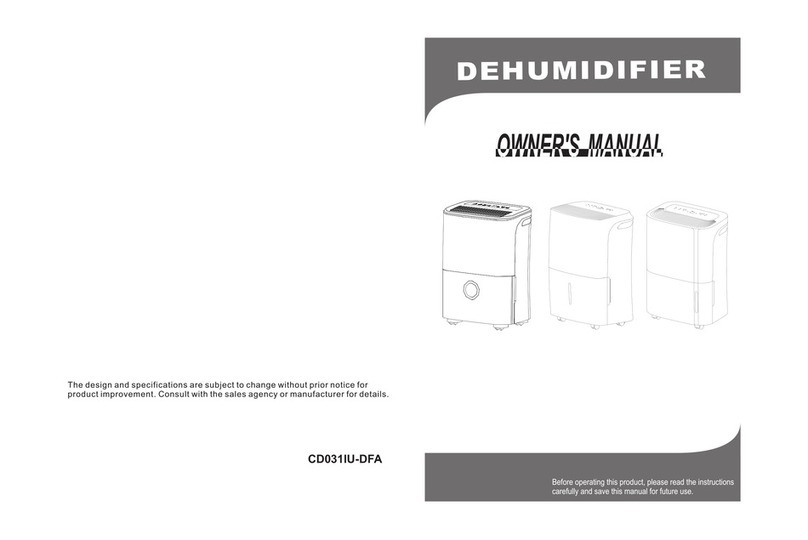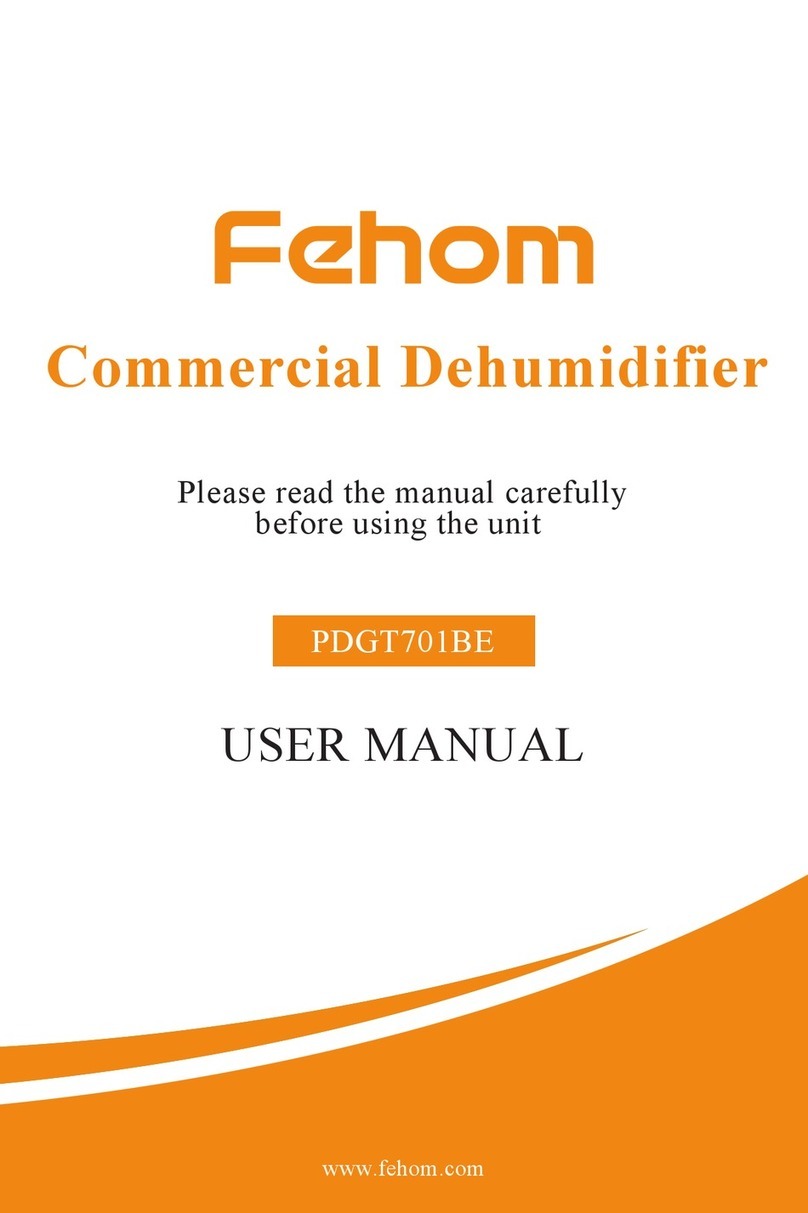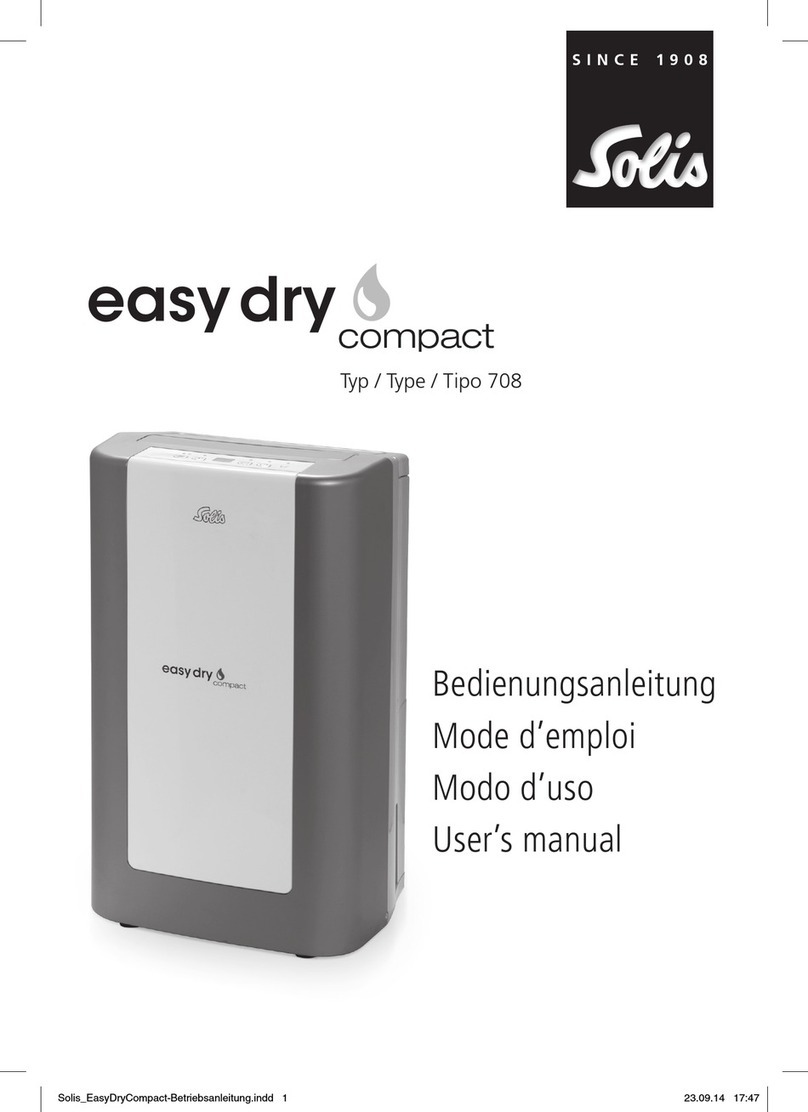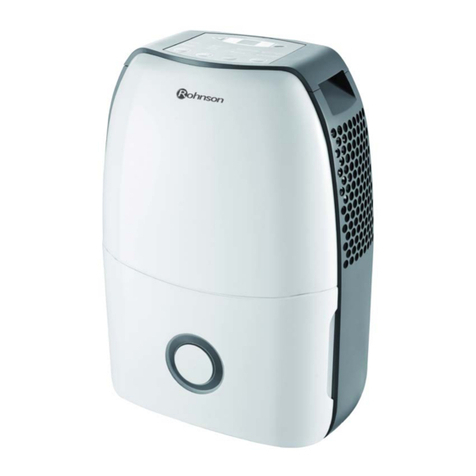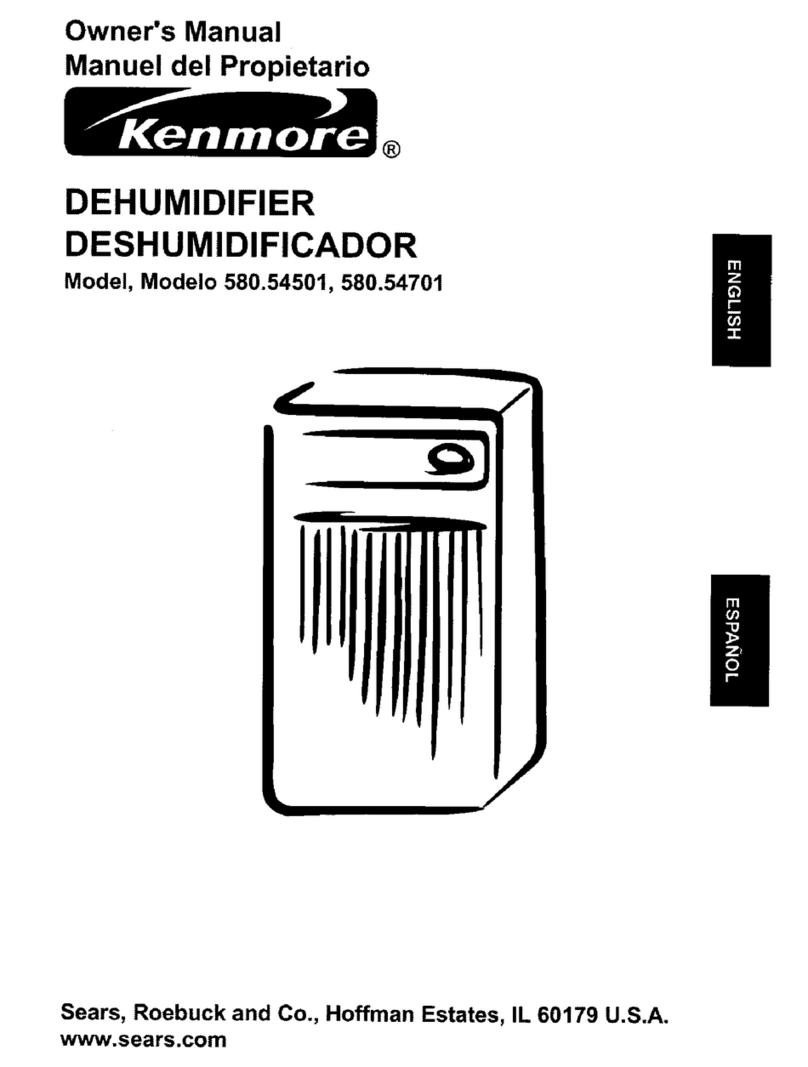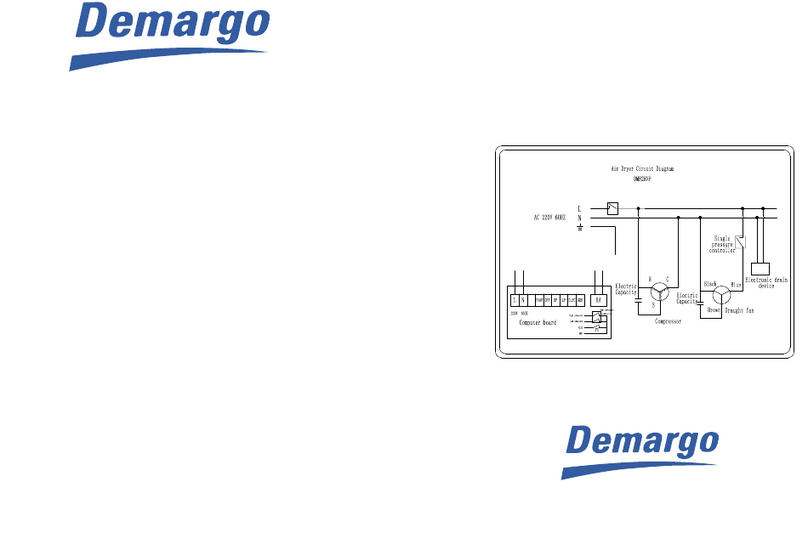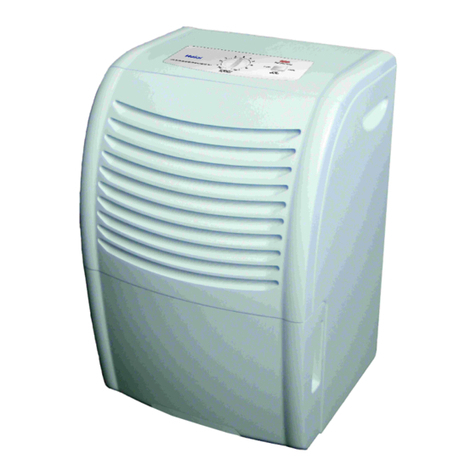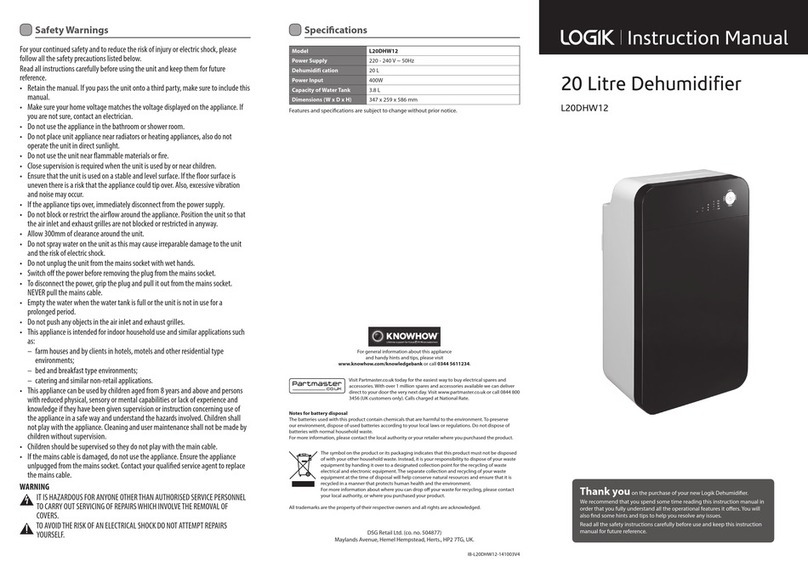R
www.danvex.fi 6
When liquid turns into a gaseous state, the energy should flow in reverse. This energy is
called the heat of evaporation. It does not cause any rise of temperature, it is only necessary
for the change from a liquid to a gaseous state. Vice versa, the energy is released when gas
turns into liquid, such energy is called heat of condensation.
The heat generated at condensation and evaporation and is identical.
For water this is 2250kJ/kg (4.18kJ = 1kcal)
This shows that a relatively large amount of energy is released in the process of water vapor
condensation.
If the moisture to be condensed is not generated at evaporation in the room but is introduced
from outside, e.g. via ventilation, the heat of condensation released in the process will be
used for the room heating.
If it is required to dry materials or rooms the heat energy recirculates, i.e. it is consumed
during evaporation and is released during condensation. A large amount of heat energy is
generated at the supplied air dehumidification process, which is expressed as a rise of
temperature.
Normally the time necessary for drying does not depend only on the unit capacity, but is de-
termined by the rate at which the material or the building elements release the moisture they
contain.
Safety Instructions
Prior to delivery the units are subject to comprehensive testing of their materials, functional
capabilities and quality.
However hazards can arise if the unit is operated by untrained persons unfamiliar with its
operation principles or in case the unit is not used for the intended purpose. The following
safety instructions must be observed:
◊ It is prohibited to install or operate the units in the locations subject to explosion hazard.
◊ It is prohibited to install or operate the units in the locations with oil, sulphur, chlorine or salt
containing atmospheres.
◊ The units must be installed upright.
◊ It is prohibited to use a direct jet of water for the unit washing.
◊ It is prohibited to cover the air inlet and outlet holes.
◊ The intake side of the unit must be free of dirt and loose objects.
◊ It is prohibited to insert objects in the unit.
◊ It is prohibited to cover or transport the unit during operation.
◊ All electric cables outside the unit must be protected against damage (e.g. from animals
etc.).
◊ It is necessary to insure that all cables meet the requirements for capacity, length and
purpose.
◊ The unit must only be transported in vertical condition. The condensate containers must be
drained prior to each transportation of the unit.
◊ It is prohibited to use the unit for purposes other than intended or not specified in this
operations instructions.
In case the requirements are not observed our company disclaims any liability and out
warranty becomes null and void.

